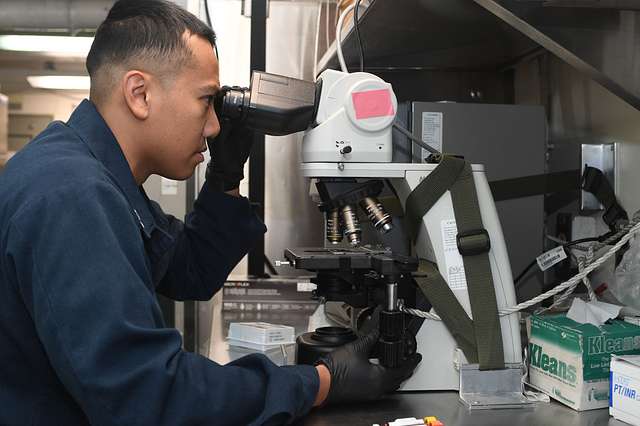Urine
Objective 8
Describe the physical characteristics of normal urine. List the chemicals or microscopic elements that can be explored through chemical and microscopic urinalysis. Explain the purpose of measuring waste products like BUN and creatinine in the urine and plasma.
Urinalysis

 A complete urinalysis test consists of an examination of the physical characteristics of the sample (what you can see just by looking at it), group of biochemical tests, as well as a microscopic examination of a centrifuged portion of the urine. The biochemical test results are determined by simply exposing a urine test strip to a patient’s urine sample. The test strip can contain anywhere from 1-10 absorbent pads depending on the number of tests ordered. Each is designed to look for the presence or absence of a different chemical or substance. Common test strips look for glucose, pH, specific gravity, albumin, blood, bilirubin, urobilinogen, evidence of bacteria and white blood cells.
A complete urinalysis test consists of an examination of the physical characteristics of the sample (what you can see just by looking at it), group of biochemical tests, as well as a microscopic examination of a centrifuged portion of the urine. The biochemical test results are determined by simply exposing a urine test strip to a patient’s urine sample. The test strip can contain anywhere from 1-10 absorbent pads depending on the number of tests ordered. Each is designed to look for the presence or absence of a different chemical or substance. Common test strips look for glucose, pH, specific gravity, albumin, blood, bilirubin, urobilinogen, evidence of bacteria and white blood cells.
 To view the urine sample microscopically, a portion of the sample is poured into a tube and spun in a centrifuge. This will cause any insoluble material to be pulled to the bottom of the tube. The liquid is poured out of the tube, and a drop of the sediment from the bottom is placed on a microscope slide and viewed using a light microscope. A normal urine sample will have very little sediment of any kind, perhaps only a few skin cells that have contaminated the sample. With certain disease conditions, red blood cells, white blood cells, bacteria, yeast, protein, and renal epithelial cells can show up in the patient’s urine. Diseases of the renal system can be diagnosed and monitored using urinalysis.
To view the urine sample microscopically, a portion of the sample is poured into a tube and spun in a centrifuge. This will cause any insoluble material to be pulled to the bottom of the tube. The liquid is poured out of the tube, and a drop of the sediment from the bottom is placed on a microscope slide and viewed using a light microscope. A normal urine sample will have very little sediment of any kind, perhaps only a few skin cells that have contaminated the sample. With certain disease conditions, red blood cells, white blood cells, bacteria, yeast, protein, and renal epithelial cells can show up in the patient’s urine. Diseases of the renal system can be diagnosed and monitored using urinalysis.

BUN & Creatinine
As mentioned previously, urea, sometimes called blood urea nitrogen (BUN), is a byproduct of protein metabolism. After the glomerulus, some urea is reabsorbed to facilitate water reabsorption. Creatinine is a waste product from creatine-based energy production in the muscles and is not reabsorbed by any tubules after the glomerulus. By looking at levels of urea and creatinine in the blood, clinicians can get an idea of how well glomerular filtration is taking place. If levels of these waste products are abnormally high in the blood and low in the urine, it indicates they are not being filtered out at the glomerulus. For this reason, it is common to see the test “creatinine clearance” being used interchangeably with “glomerular filtration rate.” It’s like if you were to go to pull your garbage cans to the street to be picked up and you noticed there wasn’t a lot of garbage in them. You head inside and see garbage everywhere. The logical conclusion would be that whoever was responsible for taking out the trash has been slacking off. The same applies to the kidneys. The glomerulus is the ultimate taker-outer of garbage in the body.
Media Attributions
- U19-032 Urine Physical and Chemical Characteristics Table © Lab Science Careers adapted by Travis Price is licensed under a CC BY-NC-SA (Attribution NonCommercial ShareAlike) license
- U19-033 Multistix Urine Test Strips © J3D3 is licensed under a CC BY-SA (Attribution ShareAlike) license
- U19-034 Urinary Infection © J3D3 is licensed under a CC BY-SA (Attribution ShareAlike) license
- U19-035 Inspects Microscopic Urine Samples © Granado, Victoria is licensed under a Public Domain license

